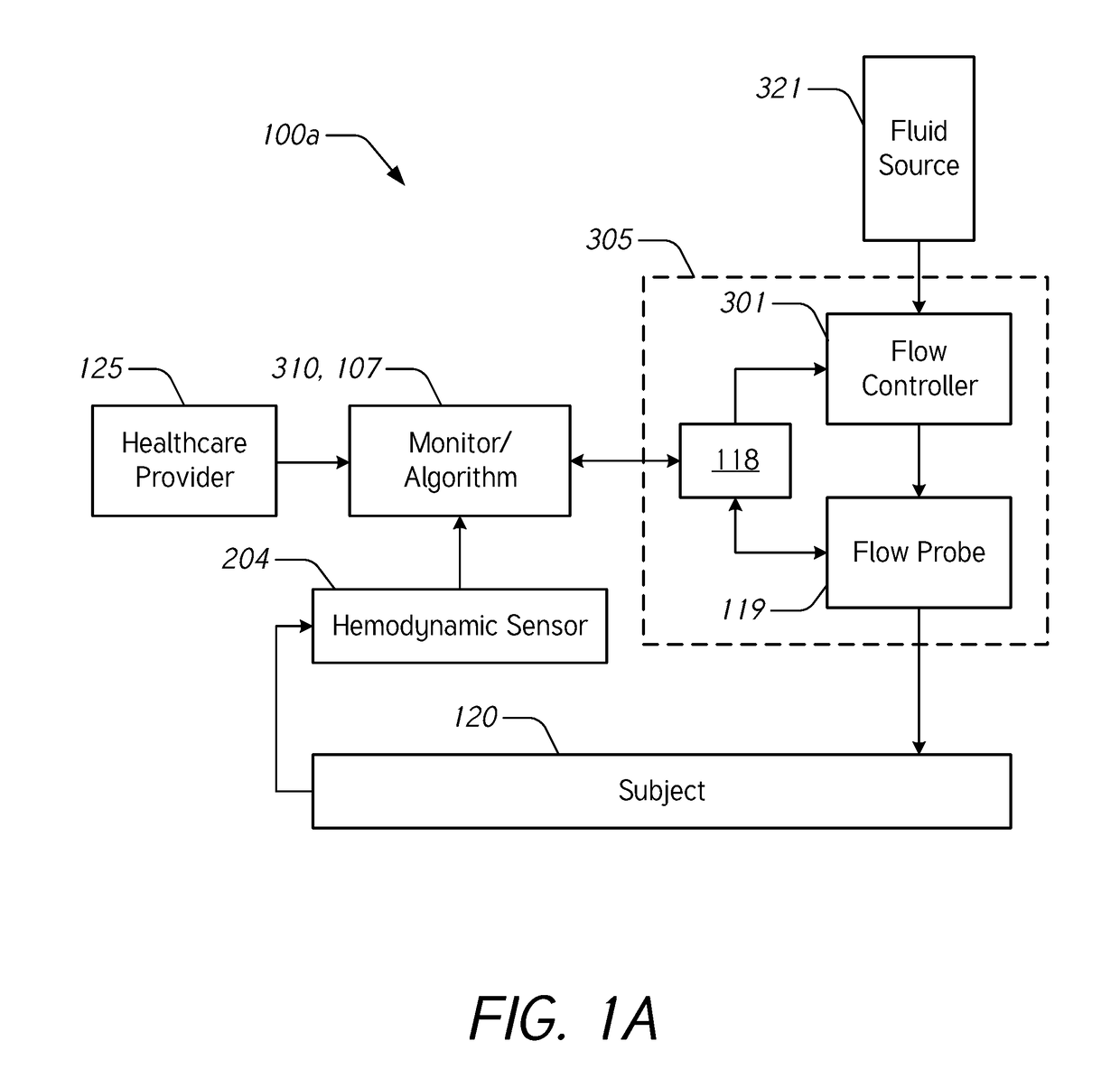Assisted fluid delivery system and method
a technology of assisted fluid delivery and boluses, which is applied in the direction of process and machine control, instruments, other medical devices, etc., can solve the problems of inconvenient use, inconvenient monitoring of fluids, and inability to determine or measure all fluids and/or medications
- Summary
- Abstract
- Description
- Claims
- Application Information
AI Technical Summary
Benefits of technology
Problems solved by technology
Method used
Image
Examples
Embodiment Construction
[0067]The headings provided herein are for convenience only and do not necessarily affect the scope or meaning of the claimed embodiments.
Overview
[0068]During intravenous (IV) infusion, there are situations where it is advantageous to deliver a fluid bolus to determine a patient's fluid responsiveness. For example, by giving a small amount of fluid in a short period of time (e.g., a fluid bolus), the clinician can assess whether the patient has a preload reserve that can be used to increase the stroke volume with further fluids. Typically, fluid challenges are administered by a healthcare professional who manually tracks the amount of fluid. Manually tracking these boluses can be tedious and prone to error. When a bolus is not being delivered, it may be desirable to provide a constant or uninterrupted flow of liquid at a relatively low flow rate (e.g., between about 10 mL / hr and about 60 mL / hr) to prevent or reduce blood clot formation at the cannula insertion site.
[0069]Accordingly...
PUM
 Login to View More
Login to View More Abstract
Description
Claims
Application Information
 Login to View More
Login to View More - R&D
- Intellectual Property
- Life Sciences
- Materials
- Tech Scout
- Unparalleled Data Quality
- Higher Quality Content
- 60% Fewer Hallucinations
Browse by: Latest US Patents, China's latest patents, Technical Efficacy Thesaurus, Application Domain, Technology Topic, Popular Technical Reports.
© 2025 PatSnap. All rights reserved.Legal|Privacy policy|Modern Slavery Act Transparency Statement|Sitemap|About US| Contact US: help@patsnap.com



